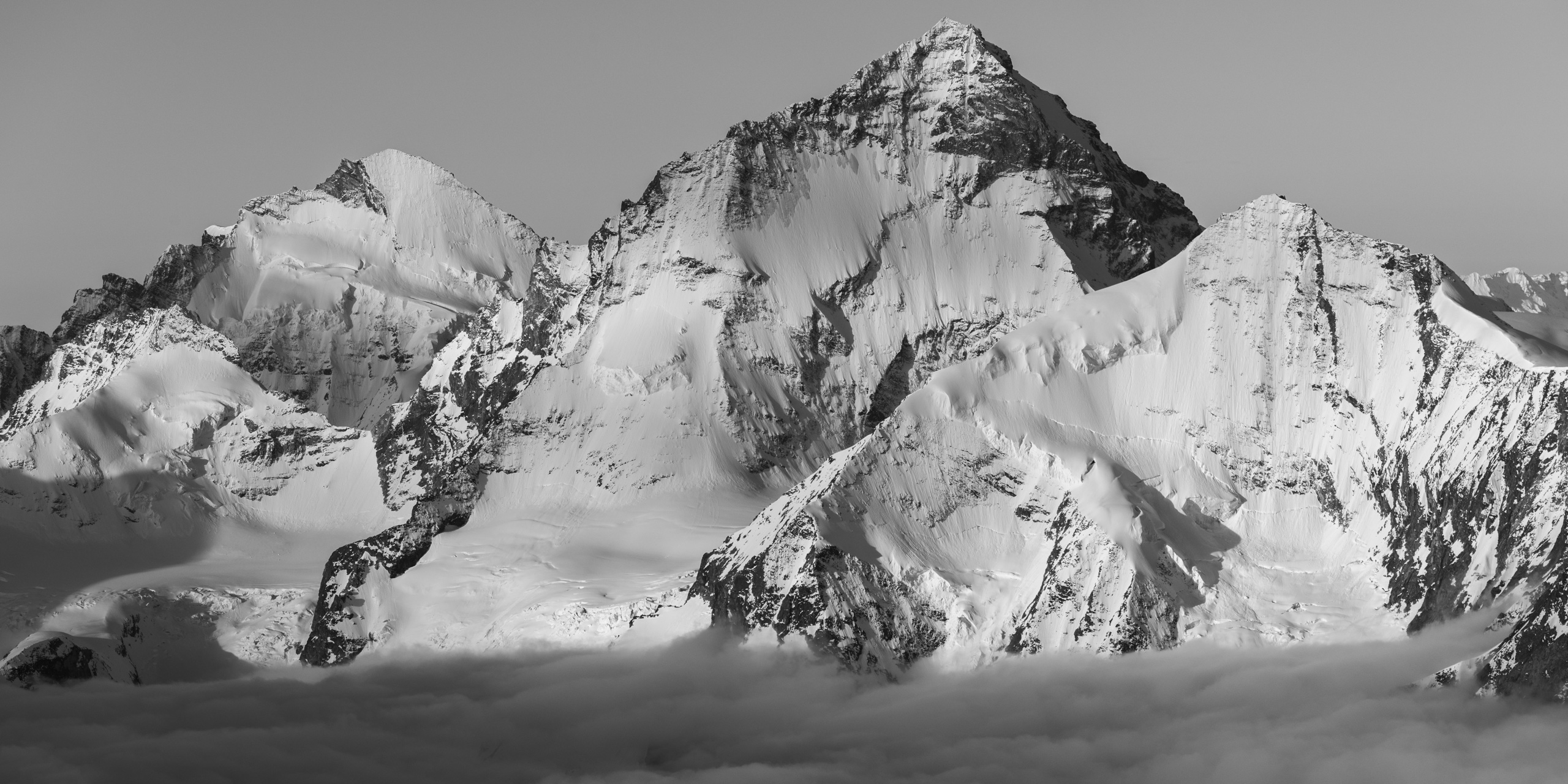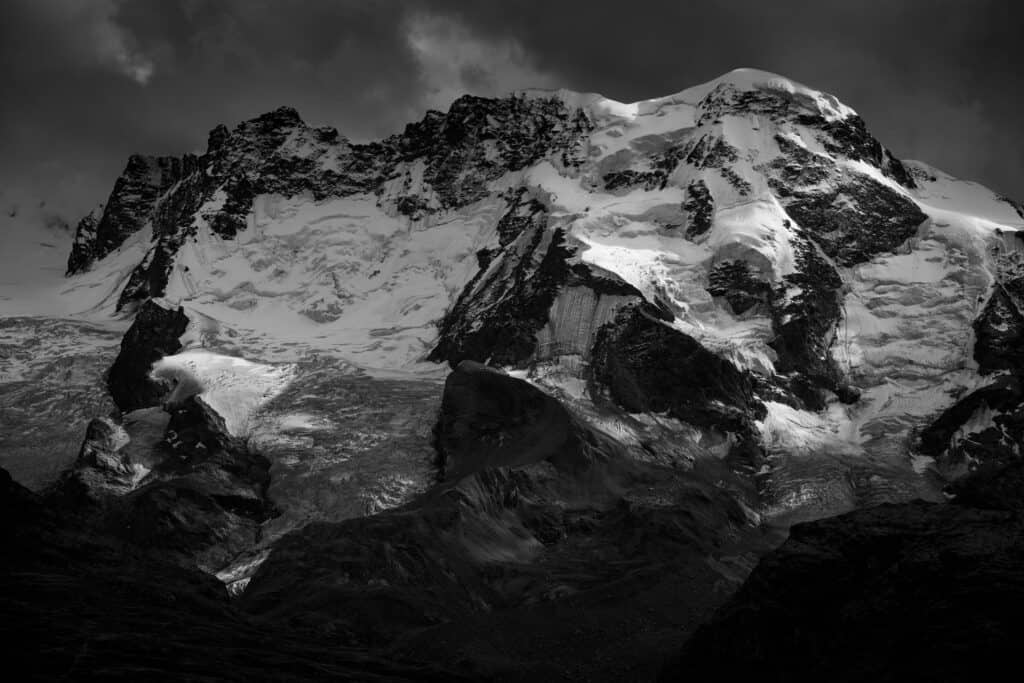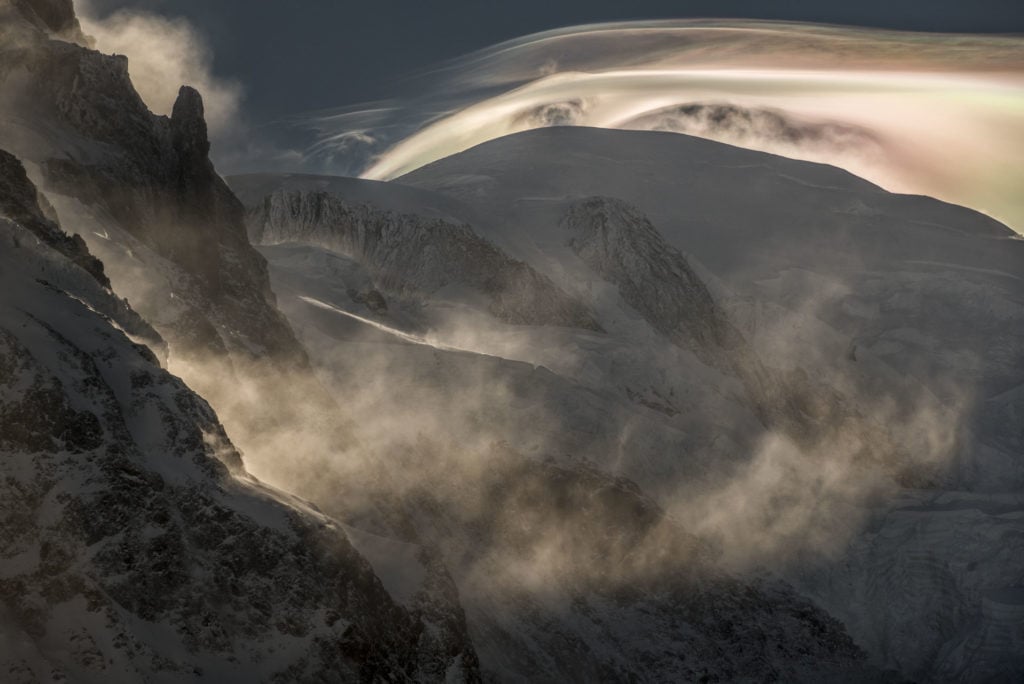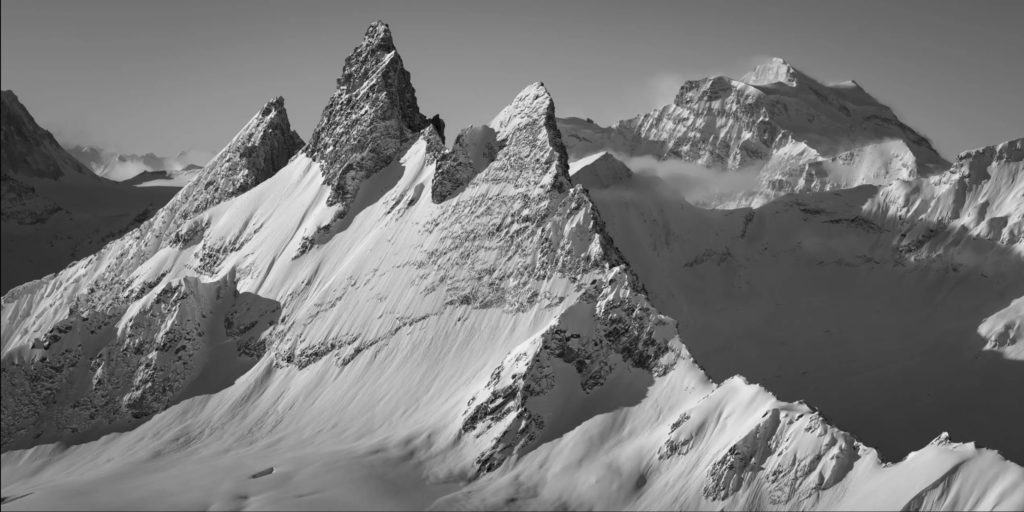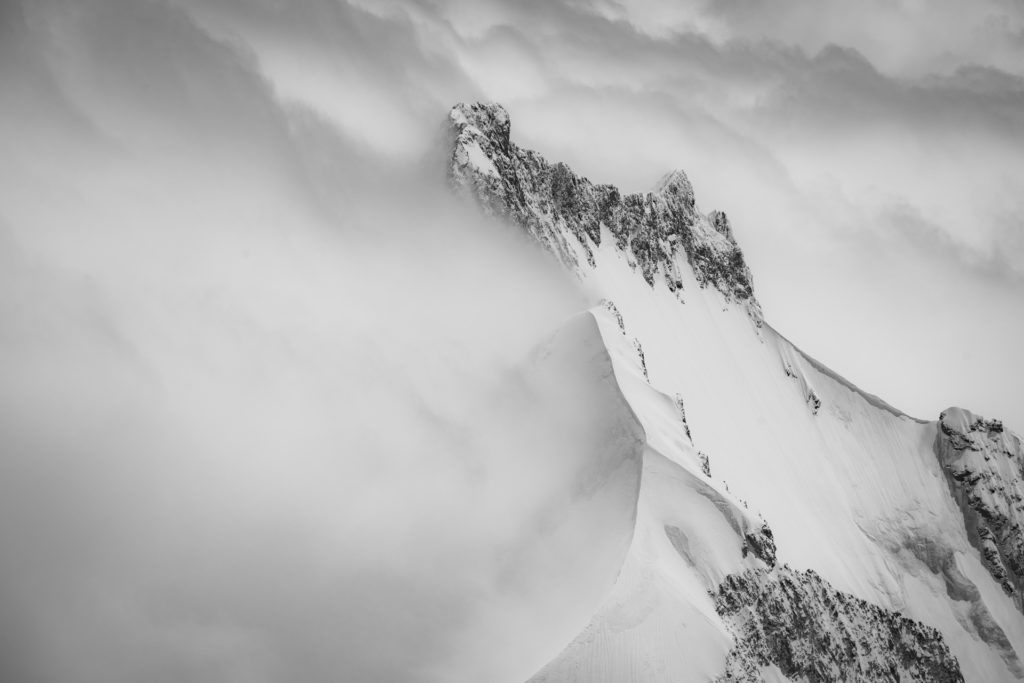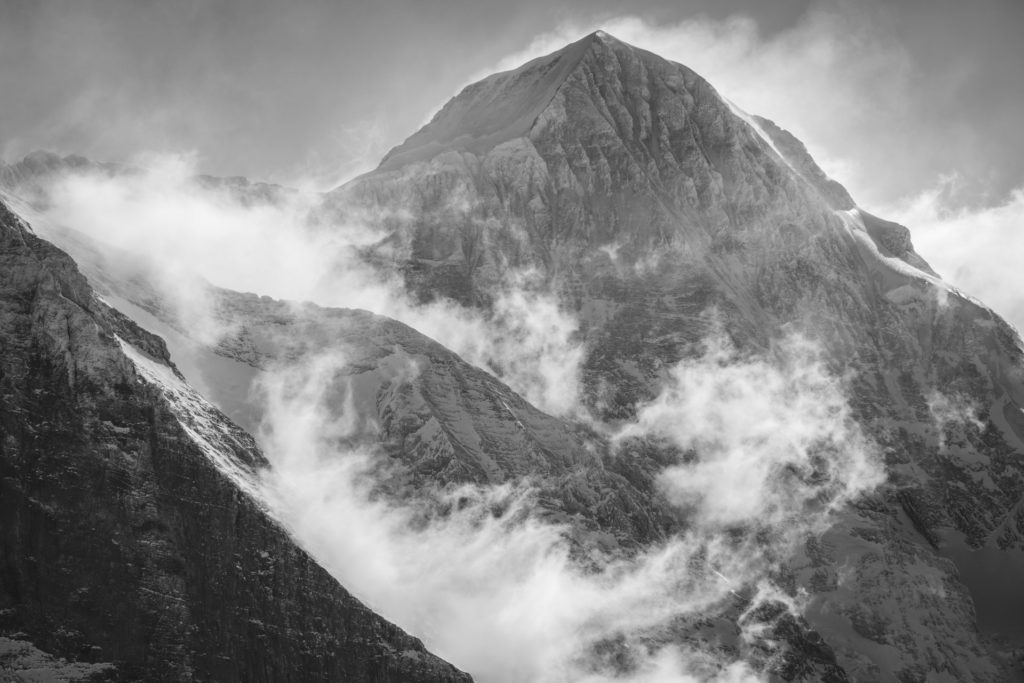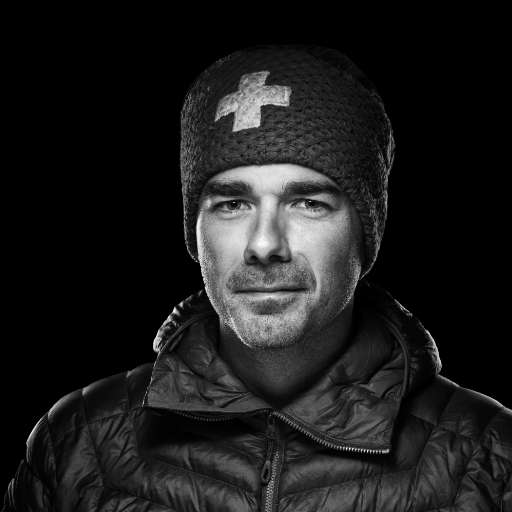The Dent Blanche stands majestically in the heart of the Valais Alps. The landmark of Évolène, it dominates the Val d'Hérens from an altitude of 4,357 metres. A rock pyramid rising out of a sea of ice, it is an indomitable, sumptuous sight. In his short story L'Auberge, published in 1886, Guy de Maupassant called it the "monstrous coquette". It's indisputable that the mountain, elegant and gigantic, impresses us as much as it bewitches us. But what are the secrets of this giant of gneiss? Portrait of an exceptional summit , the Dent Blanche, jewel of the Imperial Crown of Zinal.
La Dent Blanche | Birth of a gneiss giant in the heart of the Swiss Alps

Dent Blanche was born at the dawn of time from the furious hand-to-hand combat of millennia-old titans. The battle is fierce and worlds clash. But the African plate, with its fearsome power, manages to bend the European plate, forcing it to take refuge in the glowing bowels of an Earth in the making. Victorious, the African tectonic plate advanced northwards, taking with it marine sediments and magmatic rocks. From the folds of its crust, mountains spring.
Suddenly, the wind shifted and revolt was in the air. Escaping its vigilance, a fragment of its bark breaks free from its yoke. Conquering val d’Anniviers, the Dent Blanche plate now shapes its own territory. From the Dent du Perroc to the Zinalrothorn, it is taking its place among the greatest. From its movements emerge fabulous summits and, dominating its realm, Dent Blanche emerges. Adorned in places with quartz metadiorite, it is made ofArolla granitic gneiss. Through this magmatic rock from the depths of the ocean, the history of Dent Blanche unites with that of the Matterhorn. And their souls resonate at the summit of the Alps: she queen of the Val d'Hérens, he lord of the Valais.
History of Dent Blanche | Emblematic mountain of the Val d'Hérens
The jewel in the Imperial crown of Zinal, Dent Blanche rises to an altitude of 4357 metres above the village of Évolène. This emblematic mountain of the Hérens district is the 16th highest summits in the Alps. Its crests mark a linguistic boundary in the heart of the Valais Alps: along the Val d'Hérens and val d’Anniviers, French is spoken, while German is spoken in the Zermatt valley. Dent Blanche shows off its colossal silhouette to the world. A perfect pyramid with a grandiose appearance, it extends its ridges towards the cardinal points as if, at their confluence, the earth had decided to unite with the stars. To the east is the Quatre Ânes ridge, to the south the Wandflue ridge, to the west the Ferpècle ridge, and its northern ridge leads to the Grand Cornier.
The mountain overlooks glaciers such as Ferpècle, Dent Blanche, Grand Cornier and Schönbielgletscher. But there's very little ice on its flanks. Only winter snow makes it sparkle. So why was it given this name? Legend has it that the mistake was made by a monk cartographer, Josef Anton Berchtold, who, in the early 19th century, switched the names of the Dent Blanche and the Dent d'Hérens. And when, in 1861, the Swiss Federal Topographical Bureau published sheet 22 of the Dufour map, the confusion was confirmed.
The Swiss Federal Office of Topography believes that for a long time the name Dent Blanche, or Weisszahnhorn, referred to a high mountain region rather than a specific summit . In that case, the error would not be an error at all. Until the 18th century, high mountains were of little interest in Europe. The highest summits remained anonymous, while others were referred to in a thousand different ways. And in this little-known and inaccessible part of the Alps, the first cartographers often surveyed from a distance. Whatever its nebulous origins, Dent Blanche shines with grace and majesty. A pure diamond of rock illuminating Evolène, sublimated by winter's dazzling snow.
Conquest of Dent Blanche | Imperial Crown Jewel of Zinal
The mountain has been christened Dent Blanche. Now it's time for her to conquer the hearts of men. Its imposing silhouette haunts people's minds. Some admire its grandeur, while others dream of climbing it. On July 18, 1862, British climbers William Wigram and Thomas Stuart Kennedy, accompanied by their guides Jean-Baptiste Croz and Johann Kronig, made the first ascent of Dent Blanche via its southern ridge. The Wanfluegrat has since become the normal route to summit. Triumphing over one of the most famous 4,000-metre mountains in the Alps, climbers enjoy an exceptional panorama. Between heaven and earth, the Alps pass before their eyes, offering the most beautiful reliefs. From Mont Blanc to the Mischabels massif, from Grand Combin to the peaks of Monte Rosa, they discover the vertigo of absolute splendor. And alongside Dent Blanche, the Weisshorn, Zinalrothorn,Obergabelhorn and Bishorn bring to life the famous Imperial Crown of Zinal.
Victory followed victory on the heights of Evolène. On September 14, 1871, Margaret Claudia Brevoort, known as Meta Brevoort, became the first woman to conquer Dent Blanche. Along with Christian and Ulrich Almer and W.A.B. Coolidge, she also tackled the southern ridge. Her most remarkable feats also include the first ascent of the north face of Dent Blanche. On July 12, 1966, Yvette and Michel Vaucher opened a new route at summit . It was a mythical first ascent and a wild adventure that left its mark on the history of the Alps and the Swiss Valais. In February 1968, guide and mountaineer Camille Bournissen made the first solo winter ascent of the north face of Dent Blanche. This feat almost cost him his life, however, when rock and ice falls hit him head-on. Finally, on October 7 1980, André Georges and Bernard Maître completed the mountain's four ridges in just 16 hours.
Dent Blanche has also attracted the interest of extreme skiers. In 1985, guide André Anzévui made the first ski descent of the mountain via its south-west face. In June 2013, Gilles Sierro, Olivier Roduit and Yannick Pralong inaugurated a new couloir on its south-west face. And on February 27, 2019, it was the turn of the east face to succumb to the talent of Paul Bonhomme, who opened a new route on its steep flanks.
Climb Dent Blanche | Over 4000 metres in the Valais Alps
Today, the ascent of Dent Blanche is one of the most coveted escapes in the Alps. Whichever route you choose, the journey is long and the ordeal difficult. Fortunately, several refuges facilitate the approach. The Col de la Dent Blanche bivouac along the northern ridge, the Mountet hut giving access to the Quatre Ânes ridge, and the Schönbielhütte to the south of the mountain.
But the most spectacular refuge, nestling flush with the rock, is the Dent Blanche or Rossier hut. Built at the foot of the Wandfluegrat, at an altitude of 3,507 metres, it is the Swiss Alpine Club's highest refuge. Only the most seasoned mountaineers can reach it, as the route is rugged and the gradient steep. But the Dent Blanche hut delivers on its promise of a marvellous experience. The starting point for unforgettable traverses, the hut offers its valiant visitors a breathtaking view of the Ferpècle glacier to the Dent d'Hérens.
Whether as a "monstrous coquette" or a prodigious pyramid, Dent Blanche stirs our imaginations as it sets our hearts aflame. The celestial majesty of the Val d'Hérens, it displays its vertiginous, fascinating stature at the summit of the Swiss Alps, and for all the world to see. A rock tooth with a white soul, the mountain echoes its legendary companions, whose crests proclaim the remarkable power of the Imperial Crown of Zinal.


